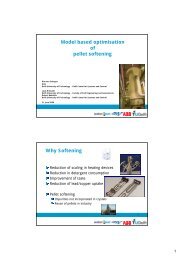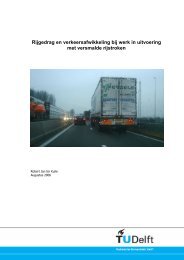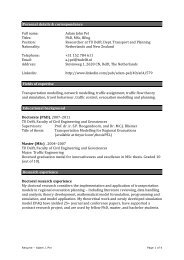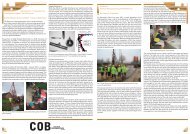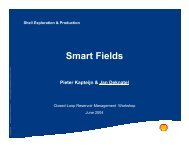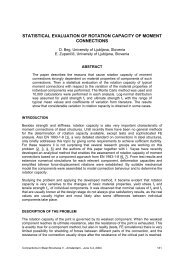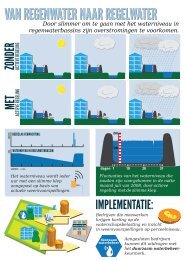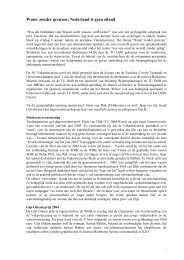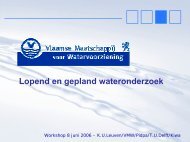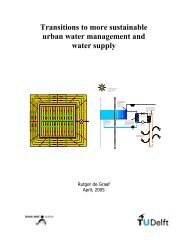Pedestrian route-choice and activity scheduling theory and models
Pedestrian route-choice and activity scheduling theory and models
Pedestrian route-choice and activity scheduling theory and models
Create successful ePaper yourself
Turn your PDF publications into a flip-book with our unique Google optimized e-Paper software.
Substitution of running cost (9) yields the following contribution to the <strong>route</strong> cost (6)<br />
Z Ti<br />
Z Ti<br />
<br />
E L 1 ðs; xðsÞ; vðsÞÞds ¼ E c 1 ds ¼ c 1 E½T i tŠ ð10Þ<br />
t<br />
S.P. Hoogendoorn, P.H.L. Bovy / Transportation Research Part B 38 (2004) 169–190 177<br />
t<br />
Eq. (10) shows that the contribution of the running cost factor (9) is indeed equal to the expected<br />
travel time T i t, multiplied by the weight c 1 . This weight factor c 1 expresses time–pressure, which<br />
in turn depends on for instance the trip purpose.<br />
5.4.2. Discomfort due to walking too close to obstacles <strong>and</strong> walls<br />
Obstacles are described by areas O m X, for m ¼ 1; ...; M. For any obstacle m, we assume that<br />
the running cost component L 2 is given by a monotonically decreasing function g of the distance<br />
dðx; O m Þ between the location x of the pedestrian <strong>and</strong> the obstacle, i.e.<br />
L 2 ðt; x; vÞ ¼g m ðdðO m ; xÞÞ ¼ a m expð dðO m ; xÞ=b m Þ ð11Þ<br />
The distance is defined by the minimum distance between the pedestrian location x <strong>and</strong> obstacle m<br />
dðx; O m Þ¼min<br />
y2O m<br />
fjjx yjjg ð12Þ<br />
where jjzjj is the Euclidean length of a vector z. Eq. (11) is based on the specification of the repellent<br />
force term of obstacles proposed by Helbing (1997). The parameters a m > 0 <strong>and</strong> b m > 0 are<br />
scaling parameters, describing the region of influence of obstacle m. Both a m <strong>and</strong> b m are dependent<br />
on the type of obstacle that is considered, e.g. they are different for building faces with <strong>and</strong><br />
without a window, regular walls, trees, newsst<strong>and</strong>s, etc. (HCM, 2000).<br />
5.4.3. Walking at a certain speed (planned walking speed)<br />
To describe that the planned walking speed jjvjj is a trade-off between the time remaining to get<br />
to the <strong>activity</strong> area in time <strong>and</strong> the energy use due to walking at a particular speed, we assume that<br />
this energy consumption is a quadratic function of the pedestrian speed<br />
L 3 ðt; x; vÞ ¼ 1 2 jjvjj2 ¼ 1 2 v0 v<br />
ð13Þ<br />
It is interesting to see that in practice, energy consumption, walking speed, <strong>and</strong> time–pressure<br />
appear to be closely connected: Weidmann (1993) shows that the Ôoptimal energy levelÕ (e.g.<br />
minimal energy consumption per kilometer) is attained at walking speeds of 1.39 m/s, which is<br />
close to observed average speeds of 1.34 m/s.<br />
5.4.4. Expected number of pedestrian interactions (discomfort due to crowding) <strong>and</strong> level-of-service<br />
In including the cost of the expected pedestrian interactions, we consider the function f ¼ fðt; xÞ,<br />
describing the expected number of interactions with other pedestrians at ðt; xÞ. Note that for<br />
pedestrian flow operations, the frequency <strong>and</strong> the severity of interactions (or rather, physical<br />
contact) relates directly to the definition of the level-of-service (HCM, 2000). In the remainder, it is<br />
assumed that fðt; xÞ is some (non-linear) function of the density kðt; xÞ<br />
L 4 ðt; x; vÞ ¼fðkðt; xÞÞ ð14Þ



